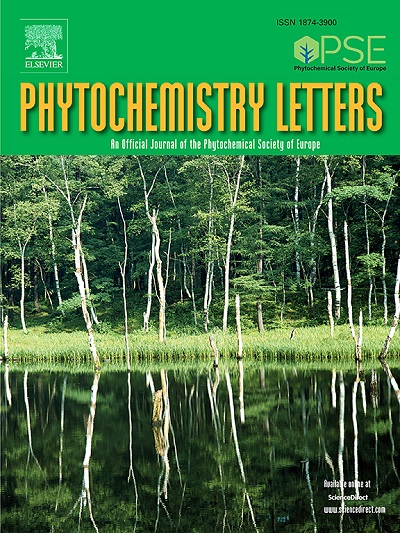Two new compounds from the roots of Mirabilis jalapa L. and their cytotoxic activity in vitro
IF 1.4
4区 生物学
Q4 CHEMISTRY, MEDICINAL
引用次数: 0
Abstract
This study investigated the chemical composition of the roots of Mirabilis jalapa L. and evaluated the cytotoxic activity of its constituents. The ethyl acetate extract of M. jalapa roots was isolated and purified, and the structures of twelve isolated compounds were identified through modern spectroscopic methods and physicochemical analysis. These compounds were categorized into two groups: compounds 1–7 (rotenoid derivatives) and compounds 8–12 (feruloyl tyramine glycosides), Among which compounds 1 and 8 are new compounds. The cytotoxicity of these compounds was assessed using the CCK-8 assay against five tumor cell lines, namely HepG2, PANC-1, HeLa, SY5Y, and AGS. Results showed compounds 4, 5, and 7 exhibited strong anti-tumor cytotoxic activity. Furthermore, network pharmacology analysis identified EGFR and STAT3 as key antitumor targets, and this finding was validated by molecular docking experiments. Overall, this research highlights the chemical diversity of M. jalapa roots and provides insights into the potential development of antitumor agents from this plant.
紫茉莉根中两种新化合物及其体外细胞毒活性研究
对紫茉莉根的化学成分进行了研究,并对其化学成分的细胞毒活性进行了评价。对青椒根的乙酸乙酯提取物进行了分离纯化,并通过现代光谱学方法和理化分析鉴定了12个分离化合物的结构。这些化合物分为两类:化合物1 ~ 7(类鱼素衍生物)和化合物8 ~ 12(阿魏酰酪胺苷),其中化合物1和8为新化合物。采用CCK-8法对5种肿瘤细胞系HepG2、PANC-1、HeLa、SY5Y和AGS进行细胞毒性评价。结果表明,化合物4、5、7具有较强的抗肿瘤细胞毒活性。此外,网络药理学分析发现EGFR和STAT3是关键的抗肿瘤靶点,并通过分子对接实验验证了这一发现。总的来说,这项研究突出了jalapa根的化学多样性,并为从该植物中开发抗肿瘤药物提供了潜在的见解。
本文章由计算机程序翻译,如有差异,请以英文原文为准。
求助全文
约1分钟内获得全文
求助全文
来源期刊

Phytochemistry Letters
生物-生化与分子生物学
CiteScore
3.00
自引率
11.80%
发文量
190
审稿时长
34 days
期刊介绍:
Phytochemistry Letters invites rapid communications on all aspects of natural product research including:
• Structural elucidation of natural products
• Analytical evaluation of herbal medicines
• Clinical efficacy, safety and pharmacovigilance of herbal medicines
• Natural product biosynthesis
• Natural product synthesis and chemical modification
• Natural product metabolism
• Chemical ecology
• Biotechnology
• Bioassay-guided isolation
• Pharmacognosy
• Pharmacology of natural products
• Metabolomics
• Ethnobotany and traditional usage
• Genetics of natural products
Manuscripts that detail the isolation of just one new compound are not substantial enough to be sent out of review and are out of scope. Furthermore, where pharmacology has been performed on one new compound to increase the amount of novel data, the pharmacology must be substantial and/or related to the medicinal use of the producing organism.
 求助内容:
求助内容: 应助结果提醒方式:
应助结果提醒方式:


